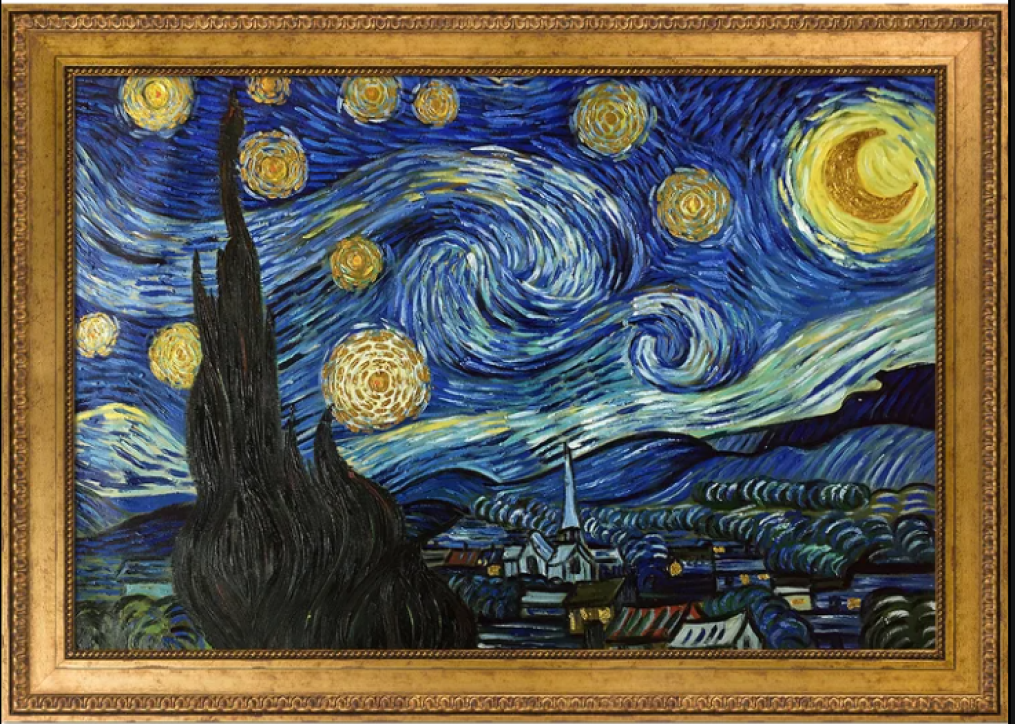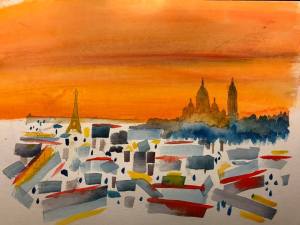by Rosa Cartagena and John MacArthur
Figuring out what art to hang on your walls can be daunting, particularly if you’re determined to avoid something mass-produced. Choosing it, though, shouldn’t be stressful — it’s one of the best opportunities in your home to showcase your personality and maybe your culture, too.
You don’t have to be Beyoncé to afford the real stuff, either. Although high-end fine art typically costs thousands of dollars (or tens of thousands), there are many alternative options for buying pieces under $1,000, or even $100. “It’s easy to fall into the trap of … thinking that taste equals the amount you spend or where you bought it,” says Colleen Cash, a senior vice president at Artnet, an online art auctions platform. “I think some of the most beautiful collections are the ones that have meaningful stories.”
We asked experts in the art and design world to share their advice for approaching the art scene as a novice — and coming away with a piece that fits your budget.
Trust yourself
Maybe you’re drawn to colorful, abstract art or you’re obsessed with pastel landscapes. Learning to differentiate what irks you from what invigorates you is essential to choosing pieces that will make you happy for years to come. There’s a perception that you need all sorts of knowledge before you say yes to an artwork, but what matters most is that you love it.
“There’s no right or wrong, it’s just what you connect with as a person — because you have to live with this stuff,” says Ian Bourland, a professor of art history and criticism at Georgetown. He advises following your instincts, and asking yourself: “What is going to enlighten your household? What do you like to be around everyday? What’s going to make your life better?”
Visual art spans painting, photography, drawing, printmaking and sculpture, so it’s essential to decide what kinds of works you’re most interested in pursuing. Focus on your needs: Is it just one piece that you want to feature on a specific wall? Or are you conceptualizing an entire room? Determine your goals for articulating the mood of the space you’re looking to fill.
You also might find certain genres or artists that you want to support because of your own interests or identities. In her book “Represent: Art and Identity Among the Black Upper-Middle Class,” Patricia A. Banks, a professor at Mount Holyoke College, examines the sociology of art collecting, finding that some Black patrons collect as “a way for them to articulate and nourish their racial identity,” she says, adding: “It’s a very personal practice.”
Understand how pricing works
Several factors influence the price of an artwork, from medium to materials to labor. Pieces from popular and established artists will be more expensive than those by emerging artists. Large oil paintings on canvas can cost $10,000 and up, while drawings, photographs and other works on paper get priced lower.
Prints generally are the least expensive because they’re usually made in batches of limited editions (so, a print is one of multiples). The smaller the edition number — meaning, the rarer the work is — the more valuable the print. A limited edition print can make a great first purchase because it’ll be relatively affordable while offering quality and originality that you won’t find in mass-produced pieces.
Plus, you can feel good about spending more on original art than whatever you’d find at Target: Your money will directly benefit the artist, rather than a big company. Buying art can also be about more than aesthetics — it can be an intentional and powerful way to support artists from marginalized backgrounds who have been historically shut out.
Don’t let galleries intimidate you
Galleries can come across as elitist and reserved only for buyers with unlimited funds. “I would always advise, like, just ignore all of that,” says Nicola Charles, who runs 11:Eleven in Washington, D.C., a gallery of contemporary art that spans a wide price range. “If you like the vibe, then that’s where you should be. If you don’t like the vibe, just leave.”
Still, Charles can relate. Even as a gallerist, she says she’s gotten the side-eye from art dealers who assume she can’t afford what’s on the wall, and she knows the lack of price transparency in some venues can feel like a barrier. She lists all the prices next to the pieces in her space, where works currently range from $80 to $11,000. Charles recommends being upfront with gallerists about your budget, because once you strip back the pomp, what’s occurring is simply a financial transaction. She shares another pro tip, too: “Something that isn’t often publicized is don’t be afraid to ask for a payment plan.”
Commercial galleries aren’t the only option, either. Nonprofit, artist-run, and artist-centered galleries actively try to recruit newcomers into the art world, thus they’re often more welcoming. “We seek to really support underserved emerging artists,” says Victoria Reis, director of the nonprofit Transformer gallery in D.C. “The majority of artists that we work with … are BIPOC artists, queer artists, women artists.”
Transformer provides multiple ways to buy modestly priced work, such as their FlatFile program, which features original works and limited edition prints all priced at $500 or less. Many galleries also sell small, unframed works on paper at affordable prices.
Find local artists
Getting engaged in your local artist community will lead you to diverse work and help you hone your taste. One easy way to start: Sign up for newsletters at galleries and cultural organizations that you like. Local organizations like the Rockville Art League, Montgomery Art Association, Olney Art Association and the Wheaton Arts Parade Gallery are all sources of fine art.
Go online
The boom of digital art platforms has created more access and price transparency — both great things for new collectors. Thanks to Instagram, we can all easily connect with artists anywhere in the world. If you find someone whose work speaks to you, “drop into their DMs!” says John of Artpal. “It’s quite literally as easy as just saying, ‘Hey, I love your artwork. I would be curious if you have anything available.’ ”
Artpal is another major platform, hosting regular online auctions, a price database of fine artworks, and educational resources for potential buyers. Its pieces run from $100 to $10,000 and up; each one is assigned a link to the artist who can tell you everything you’d want to know about it. Though buying a piece without seeing it in-person obviously carries some uncertainty, online markets (including Artpal) often use virtual reality technology to show you the scale, color and details of the work.



You must be logged in to post a comment.